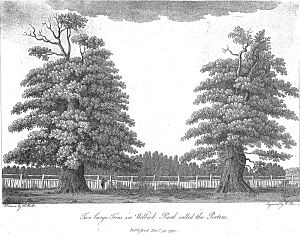Hayman Rooke facts for kids

Hayman Rooke (born February 20, 1723 – died September 18, 1806) was a British soldier who later became very interested in old things and history. He was known as an antiquary, which means someone who studies ancient objects and places. He loved studying ancient sites and objects. A famous tree, the Major Oak in Sherwood Forest, is even named after him!
Contents
Who Was Hayman Rooke?
Hayman Rooke was born on February 20, 1723, in Westminster, England. He joined the British Army and became a major. After his time in the army, he moved to Mansfield Woodhouse in Nottinghamshire.
There, he became a pioneer archaeologist in the county. An archaeologist is someone who studies human history by digging up old sites and looking at artifacts. Even though he didn't have formal training, he knew a lot about different areas of archaeology.
Rooke's Discoveries and Writings
Hayman Rooke was especially interested in Roman finds around Mansfield Woodhouse. He wrote many articles for a journal called Archaeologia between 1776 and 1796.
He wrote about Roman history, but also about medieval churches. He also wrote about large, important estates like Welbeck, Bolsover, Haddon Hall, and Thoresby.
The Major Oak's Name
The famous Major Oak tree in Sherwood Forest is named in his honor. This was to recognize his writings and his great love for Sherwood Forest.
Other Roles and Recognition
Besides his historical work, Rooke was also a magistrate. A magistrate is a local official who deals with minor legal cases. He was also a deputy Lieutenant for Nottinghamshire.
His former home, Woodhouse Place in Mansfield Woodhouse, received a blue plaque in 2015. A blue plaque is a special sign placed on a building to remember a famous person who lived or worked there.

